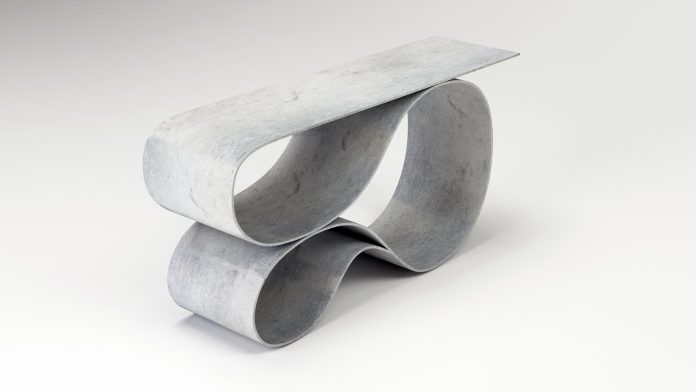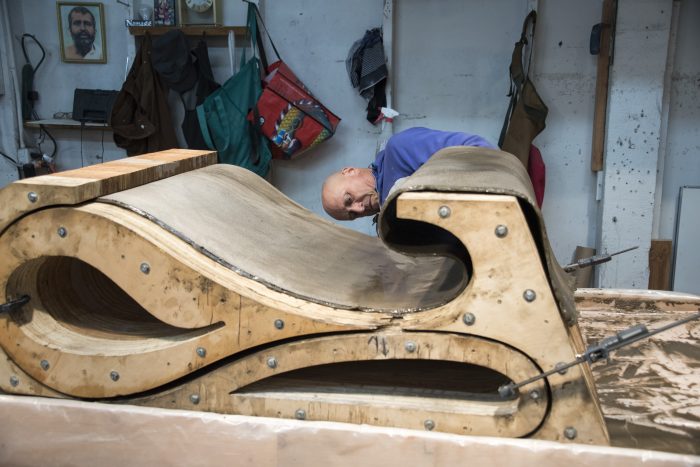Artists and designers are always looking for new materials to work with to produce new and exciting work. One material which has become popular for a variety of artists and designers is Concrete Canvas (CC). The material is a concrete filled fabric, which once hydrated, can be manipulated and hardens into any shape determined by the designer.
Initially designed by two UK university students, William Crawford and Peter Brewin in 2004, the material was intended to be used to build semi-permanent, rapidly deployable disaster relief shelters. As the Concrete Canvas Ltd continued to grow, however, the business began to focus more on producing the material rather than the inflatable shelters, due to an increased demand for their ‘concrete on a roll’.
The largest business sector Concrete Canvas services is civil engineering. Their products are used for a variety of applications across the world, as they export over 80% of their product from their South Wales-based factory. Some applications include channel lining and slope protection, and the UK’s Environment Agency has endorsed Concrete Canvas as an eco-friendly concrete alternative.
The appeal of the product to designers is its flexibility, which allows the material to be shaped, and the ease with which it becomes hard. As stated, CC can be easily manipulated into the desired shape. This is done by either placing CC over an existing form, in civil engineering, this may take the form of a channel or slope, or placing CC over a removable frame. Once the shape is decided on, CC can be cut to size with simple hand tools. The CC fabric can also be painted once hardened with standard exterior masonry paint to provide a variety of vibrant colours and help designers convey their vision for the project.
One such example of a piece of design which utilised the advantages of Concrete Canvas was a project created by CAN (Critical Architecture Network) in London called “Picnic Podium”. The bench was installed for the start of the London Festival of Architecture in 2012 and is now a permanent feature in the Royal Docks area of London.
Created using CC13TM, a 13mm thick variation of Concrete Canvas, then painted a vibrant red, the bench appears to float while being totally rigid and secure.
Another example of CC being used to produce unique furniture was American designer Neal Aronowitz’s work with the product in 2017. The idea behind Aronowitz’s work was to produce pieces which were handcrafted and combined a sculptural presence along with the functionality of furniture.
Aronowitz used CC8TM for his collection of tables and developed new casting and forming techniques which resulted in ribbon-like structures. Once out of the casts, the pieces were sanded smooth to produce a polished finish. According to Aronowitz the project allowed him to “explore the material’s unique structural properties to express a fluid form, in contrast to the dense and heavy associations that we have with concrete.”
The Whorl Table won the 2017 Azure Magazine People’s Choice Award for Furniture and Lighting. The Whorl Console made the longlist for the Dezeen Awards 2018 in the design category as one of just 171 projects out of 3,500 entries.
Overall, Concrete Canvas is a material which has been utilised for artistic and lifestyle purposes despite it originally being developed for use in the civil engineering sector, among others. Due to the nature of the product and the ability of Concrete Canvas Ltd to expand their production to satisfy the customer need, the number of uses has increased along with the size of the company.
Find a Home-Based Business to Start-Up >>> Hundreds of Business Listings.



















































